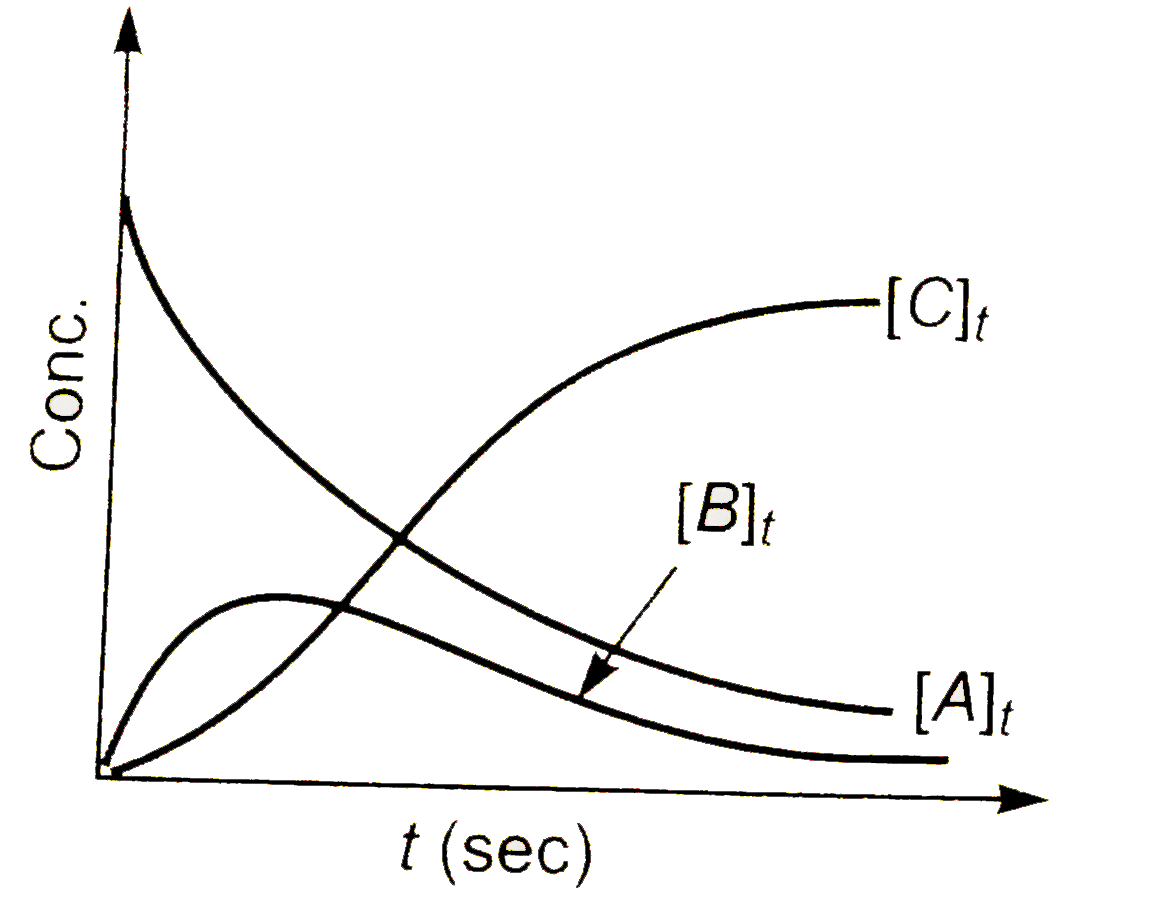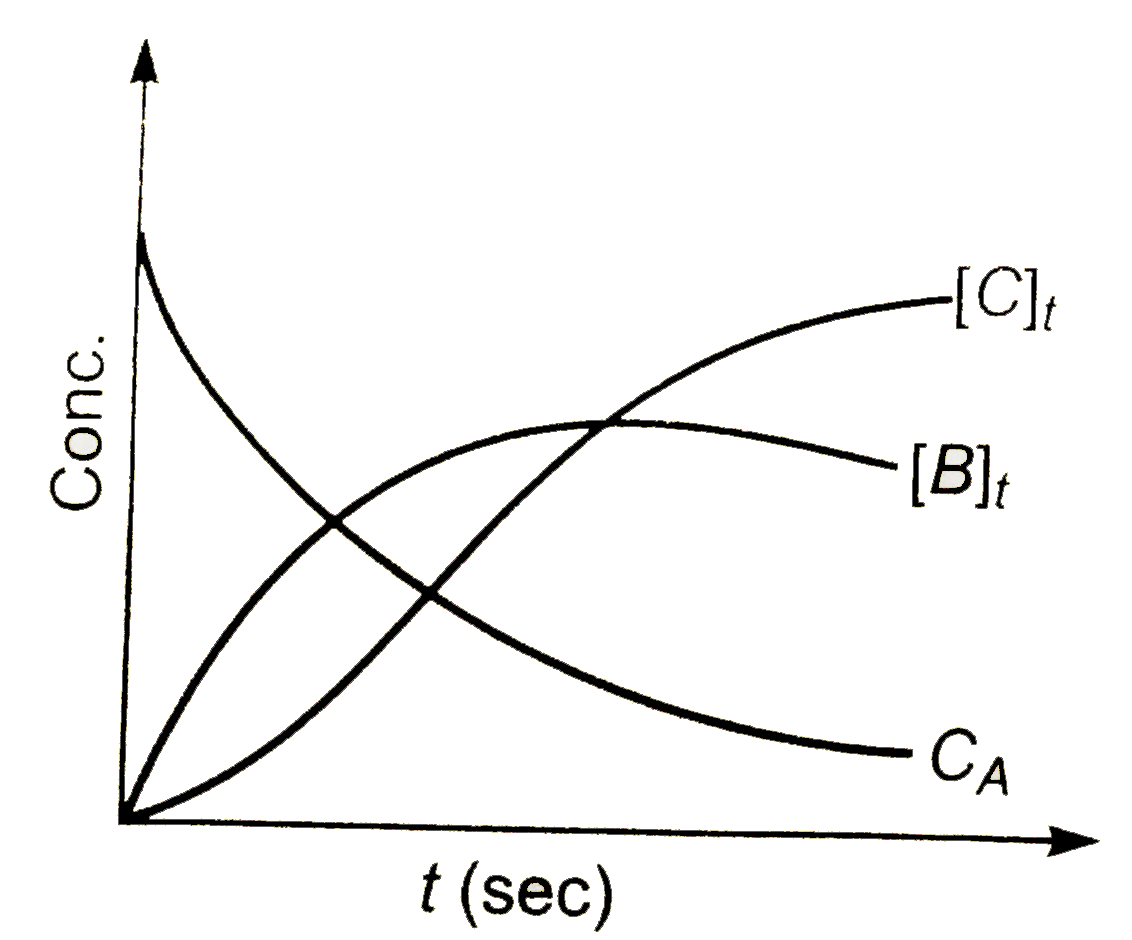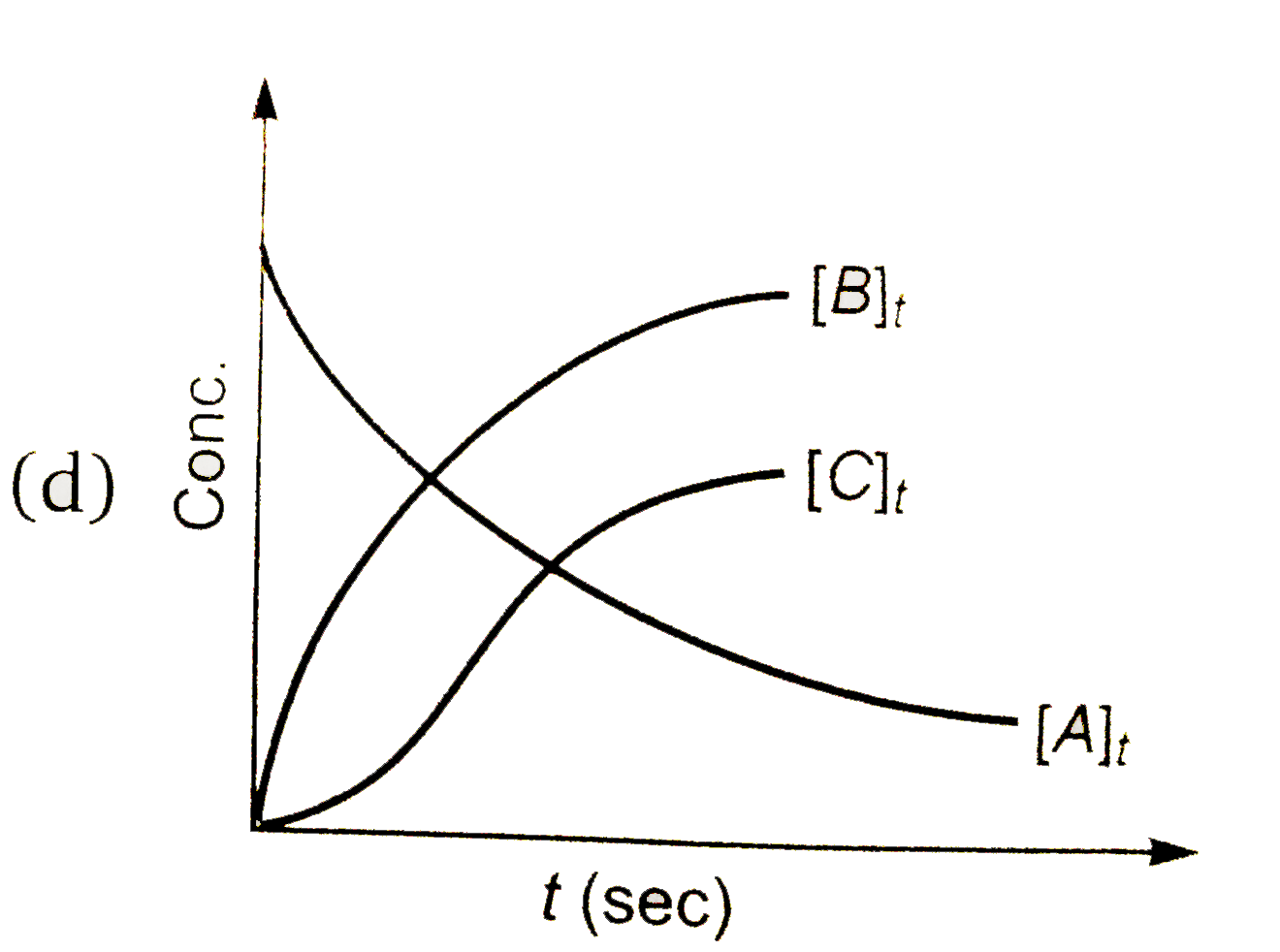is first order reaction.
Reaction prgress is measured with the help of titration of reagent 'R'. If all A, B and C react with reagent and have 'n' factors [n factor,eq. mass= in the ratio of with the reagent, the k in terms of n_(2) is :Solution in Punjabi
The correct Answer is:D
Step by step video & image solution for A(aq)rarrB(aq)+C(aq) is first order reaction. "Time"" "t" "oo "moles of reagent " " "n_(1)" "n_(2) Reaction prgress is measured with the help of titration of reagent 'R'. If all A, B and C react with reagent and have 'n' factors [n factor,eq. mass=("mol.mass")/(n) in the ratio of 1:2:3 with the reagent, the k in terms of t, n_(1) and n_(2) is : by Chemistry experts to help you in doubts & scoring excellent marks in Class 12 exams.
Topper's Solved these Questions
- BOOK - NARENDRA AWASTHICHAPTER - CHEMICAL KINETIC & NUCLEAR CHEMISTRYEXERCISE - Level 2 (Q.33 To Q.35)2videos
CHEMICAL KINETIC & NUCLEAR CHEMISTRY
- BOOK - NARENDRA AWASTHICHAPTER - CHEMICAL KINETIC & NUCLEAR CHEMISTRYEXERCISE - Level 3 - Passage1videos
CHEMICAL KINETIC & NUCLEAR CHEMISTRY
- BOOK - NARENDRA AWASTHICHAPTER - CHEMICAL KINETIC & NUCLEAR CHEMISTRYEXERCISE - Level 21videos
CHEMICAL KINETIC & NUCLEAR CHEMISTRY
- BOOK - NARENDRA AWASTHICHAPTER - SURFACE CHEMISTRYEXERCISE - Level -21videos
SURFACE CHEMISTRY
Similar Questions
In a sample of wood, the reading of a counter is 32 dpm and in a fresh sample of tree it is 122dpm . Due to error counter gives the reading 2 dpm in absence of .14C . Half life of .14C is 5770 years .
The approximate age (in years) of wood sample is :01:45View SolutionTwo consecutive irreversible first order reactions can be represented by
Ak1−−→Bk2−−→C
The rate equation for A is readily interated to obtain
[A]t=[A]0.e−k1t , and [B]t=k1[A]0k2−k1[e−k1(t)−e−k2(t)]
When k1=1s−1 and k2=500s−1 , select most appropriate graph
a) b)
b) 
c) d)
d)  06:19View Solution
06:19View SolutionThe forward rate constant for the elementary reversible gaseous reaction
C2H6<⇒2CH3is1.57×10−3s−1at100K
What is the rate constant for the backward reaction at this temperature if 10−4 moles of CH3 and 10 moles of C2H6 are present in a 10 litre vessel at equilibrium .
a) 1.57×109Lmole−1s−1
b) 1.57×1010Lmole−1s−1
c) 1.57×1011Lmole−1s−1
d) 1.57×107Lmole−1s−102:13View Solutionfor the graph below, select correct order of temperture ?
 View Solution
View SolutionLet Sn be the sum of first n terms of an A.P. with non-zero common difference. Fine the ratio of first term and common difference if Sn1n2Sn1 is independent of n1.
03:33View Solutionf(n)=prod_(r=1)^(n)(sin r),n in N and S_(1):|f(n_(1))|>|f(n_(2))|AA n_(1)
01:49View SolutionIf n^(2)-11n+24=0 is satisfied by n_(1)&n_(2) where n_(2)>n_(1) then
View SolutionA(aq)→B(aq)+C(aq) is first order reaction.
Time t ∞
moles of reagent n1 n2
Reaction prgress is measured with the help of titration of reagent 'R'. If all A, B and C react with reagent and have 'n' factors [n factor,eq. mass=mol.massn in the ratio of 1:2:3 with the reagent, the k in terms of t,n1andn_(2) is :03:04View SolutionIf n2−11n+24=0 is satisfied by n1&n2 where n2>n1 then (A) n21+n2 is prime number (B) n1&n2−n1 are co-prime (C) n1&n2−n1 are twin primes (D) n1+n2+n1n2 has 2 prime divisors
10:03View Solutionn1A+n2B→उत्पाद के लिए दर समीकरण निम्नलिखित है
−dxdt=k[A]n1[B]n2 में अभिक्रिया की कोटि है।03:25View SolutionA→B+C Time 0 t Volume of reagent V1 V2 The reagent reacts with A, B and C. Find k.
View SolutionA to B+ C is a first order reaction Reagent reacts with all A, B and C and have 'n' factors in the ratio of 1 : 2 : 3 with the reagent. Find k.
View Solutionযদি (nCr−1a)=nCrb=(nCr+1c) হয়, তবে প্রমাণ কর n=ab+2ac+bcb2−ac এবং r=a(b+c)b2−ac
View SolutionIf S1,S2 and S3 denote the sum of first n1,n2 and n3 terms respectively of an A.P.L , then :
S1n1.(n2−n3)+S2n2.(n3−n1)+S3n3.(n1−n2) is equal to :View SolutionFor k∈N, let Nk={km:m∈N}
Suppose a,b∈N and Na∩Nb=Nc for some c∈N, then08:23View Solutionएक आव्युह Q इस प्रकार विद्यमान है की जहाँ PQTT=N है जहाँ P=⎡⎢⎣120210001⎤⎥⎦ दिया गया है N एक विकर्ण आव्यूह है जिसका रूप N = diag (n1,n2,n3) है जहाँ n1,n2,n3 के तीन मान है जो समीकरण det(P−nI)=0,n1<n2<n3 को संतुष्ट करते है
एक तत्समक आव्यूह है है जिसकी कोटि 3×3 है।
यदि QT=Q+αIहो , तोα का मान बराबर है05:55View Solution

